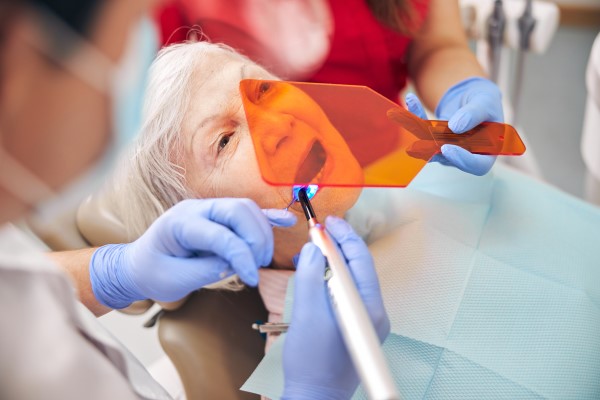Quick Guide to Dental Bonding

A smile is typically the first thing that people notice about you, so if your teeth are chipped or discolored, you may find yourself smiling less, and dental bonding is one of many options for improving the appearance of your teeth. This article provides a quick guide to dental bonding, so you can have enough information about the dental procedure.
What is dental bonding?
Dental bonding is a simple and cost-effective dental treatment that involves applying a tooth-colored resin to the damaged tooth. An ultraviolet light is then used to bind the resin and harden it to the tooth. Dental bonding procedures are popular among patients who have chipped or broken teeth, discoloration, or gaps between their teeth because they offer a quick and easy solution.
There is no downtime because the treatment is fast and easy, and patients can resume daily activities almost immediately. Furthermore, unless it is to treat a cavity or some form of tooth decay, it does not require a local anesthetic. The duration of the procedure depends on the number and severity of the problems that need to be resolved. The bonded tooth needs minimal care after that, aside from the normal oral hygiene routine.
The benefits of dental bonding
Even after opting for dental bonding instead of veneers or crowns, it is important to know the benefits and drawbacks of the treatment. The cost is the greatest advantage of dental bonding. It is one of the most affordable and straightforward dental procedures available. It can be completed in a single visit and does not need custom fitting.
Since there is no need for a custom-made product designed exclusively in the lab, patients will not need a temporary mold. Any required shaping or molding is completed during the bonding process.
In comparison to veneers or crowns, the bonding process removes the least amount of enamel from the teeth. Enamel is a strong outer layer that protects the teeth from tooth decay, making it essential for oral health.
Also, unless the purpose is to fill a cavity, dental bonding is usually painless and does not require any anesthesia. Using a composite resin as a replacement for amalgam fillings often has its own range of benefits. It is much more durable than dental amalgam, blends in with the rest of your teeth, and does not necessitate removing any healthy tooth structure.
The drawbacks
The composite resin used for bonding is resistant to stains, but it is not as stain-resistant as veneers or crowns. Another disadvantage is that the bonding material has a limited lifespan. Dental bonding is often typically reserved for minor cosmetic problems, such as chips or gaps, and teeth that experience minimal bite pressure, such as the front teeth. A dentist will hardly use dental bonding for anything other than minor cosmetic improvements or temporary cosmetic corrections. Furthermore, the material is prone to chipping or breakage as well.
Final note
To learn more about dental bonding and other tooth restoration options, contact the dental office to book an appointment.
Request an appointment here: https://www.smilesbyjulia.com or call Smiles By Julia at (954) 493-6556 for an appointment in our Fort Lauderdale office.
Check out what others are saying about our dental services on Yelp: Dental Bonding in Fort Lauderdale, FL.
Related Posts
Dental bonding, also known as tooth bonding, is a popular procedure that is used for a variety of reasons. Bonding can be used to cover up a myriad of imperfections, such as chips, cracks, gaps, and discolorations, and it is also used to fill in cavities. Dental bonding is popular because it uses a tooth-colored…
Dental bonding is a simple and pain-free cosmetic procedure that can fix minor imperfections with teeth. Everyone should be able to show off a smile that they are proud of, and many achieve the smile of their dreams through dental bonding treatment. The most notable reasons to consider dental bonding are to fill gaps between teeth,…
Dental bonding is a procedure used by dentists for a variety of repairs and cosmetic treatments. It is usually less expensive and more straightforward than other cosmetic dental treatments. Many people also enjoy that it requires less invasive dental work and provides natural-looking results. It is usually completed in a single appointment, which allows patients…
Dental bonding is one of the treatments used to fix cosmetic issues on teeth. The composite resins used to improve the appearance of a person's teeth are also used to fill up cavities.One of the first things people notice about a person is their smile. If you have straight, white teeth, then someone may see…
